Text
Alloy 20 / UNS N08020
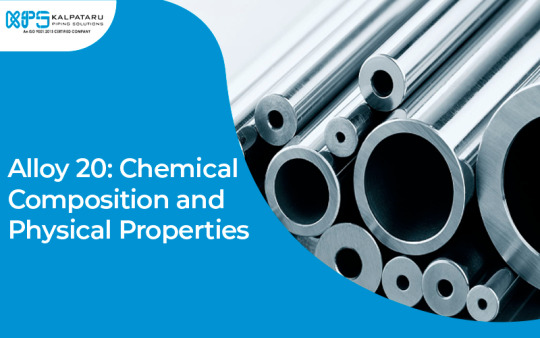
Austenitic alloy – Alloy 20 is based on nickel, iron, and chromium and has high corrosion resistance in settings including sulfuric acid and other hostile fluids. This alloy is stabilized with niobium to stop intergranular corrosion. When carefully compared to higher nickel-based alloys, Alloy 20 may offer possible cost savings while outperforming regular stainless steels.
Alloy 20 Chemical Composition:
ElementContent (%)Iron, Fe35Nickel, Ni32-38Chromium, Cr19-21Copper, Cu3-4Manganese, Mn≤2Molybdenum, Mo2-3Niobium, Nb≤1Silicon, Si≤1Carbon, C≤0.07Phosphorous, P≤0.045Sulfur, S≤0.035
Alloy 20 Physical Properties:
PropertiesMetricImperialDensity8.05 g/cm30.291 lb/in3
Alloy 20 Mechanical Properties:
PropertiesMetricImperialTensile strength (annealed)620 MPa89900 psiYield strength (annealed)300 MPa43500 psiElongation at break (annealed)41%41%
Nickel Alloy 20 Thermal Properties:
PropertiesMetricImperialThermal expansion co-efficient (@20-100°C/68-212°F)14.7 µm/m°C8.17 µin/in°FThermal conductivity12.3 W/mK85.4 BTU.in/hrft².°F
Industries and Applications:
Alloy 20 distinctive attributes find resonance in a multitude of industries. From chemical processing to pharmaceuticals, this alloy proves its mettle in various applications. We unravel the sectors that have harnessed the power of Alloy 20 and delve into specific use cases that highlight its adaptability and reliability.
Resistance to Corrosion:
One of Alloy 20 most remarkable features is its unparalleled resistance to corrosion. Delving into the alloy’s molecular structure, we uncover the mechanisms that empower Alloy 20 to withstand the harsh environments of chemical compounds, particularly those containing sulfuric acid. Through real-world examples and scientific insights, we illustrate how Alloy 20 stands as a stalwart guardian against the corrosive forces that can compromise other materials.
Fabrication and Heat Treatment:
The journey from raw materials to the final Alloy 20 product involves intricate fabrication techniques and carefully orchestrated heat treatments. We dissect the fabrication process, highlighting the steps that shape Alloy 20 into its final form.Furthermore, we investigate the impact of heat treatment in improving the mechanical characteristics of the alloy and ensuring that it fits the requirements of diverse applications.
It is possible to cold-work or hot-work alloy 20 using conventional techniques. Prior to forging, hot forged material should be heated to a temperature between 2100°F and 2250°F with rigorous temperature management to ensure that the material does not drop below 1800°F. After hot working, anneal the material by raising its temperature to between 1725°F and 1850°F for at least 30 minutes per inch of thickness, and then quench it in water.
When stress relief is sought, heat to a temperature below 1000°F and then quench with water once the appropriate time has passed at the temperature. Alloy 20 should be annealed at a temperature of 1725°F to 1850°F for 30 minutes per inch of thickness. By heating to 2100°F, a reduced hardness can be achieved, although this may not be good for the alloy’s ability to stabilize.
Alloy 20 is often welded using TIG, MIG, and submerged arc welding (SAW), with the appropriate filler metal (ER320LR for TIG, MIG, and SAW, and E320LR for SAW). When welding to higher-grade alloys like C276 and Alloy 22, or to dissimilar alloys like 316, AWS ERNiCrMo-3 may be used for TIG and MIG, whereas ENiCrMo-3 can be used for SAW.
Other Designations – Equivalent:
ASME SB-462 – SB-464
ASME SB-468
ASTM B 462 – B 464
ASTM B 468
ASTM B 472 – B 474
ASTM B 751
#Alloy 20#UNS N08020#Alloy 20 Chemical Composition#Alloy 20 Physical Properties#Alloy 20 Mechanical Properties#Nickel Alloy 20 Thermal Properties
0 notes
Text
Brass Pipes: Advantages and Disadvantages
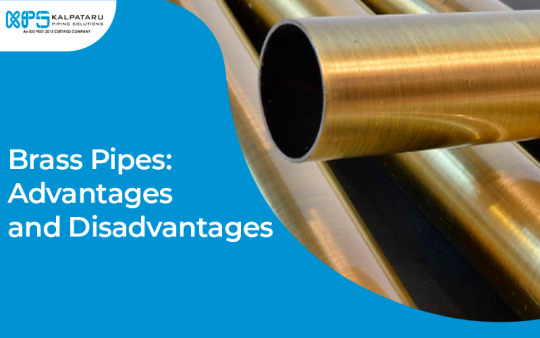
5 Advantages of Brass Pipes
Brass Pipes Durability:
Brass pipes offer an unparalleled advantage in terms of durability. Composed of an exceptionally strong metal, brass can withstand the ravages of corrosion, rust, and various environmental factors for extended periods without necessitating replacement or repair. Remarkably, it demands no specialized maintenance or care to retain its optimal condition. This characteristic renders it an exceptional choice for plumbing endeavors requiring longevity without the need for recurrent maintenance or repairs.
Brass Pipes Are Easy to Install:
Brass presents a visually pleasing aesthetic compared to alternative metals such as copper or steel. Its golden hue adds a touch of elegance and sophistication to any space or structure employing brass piping applications. Consequently, it emerges as the ideal selection for diverse settings, including residential homes, commercial edifices, and projects where aesthetics play a pivotal role.
Brass Pipes Easy to Customize:
Brass pipes are relatively easy to work with compared to other metals such as copper or steel. Their malleability allows for straightforward bending and shaping, making them ideal for customized piping applications that require specific forms and configurations.
Brass Pipes Are Fire Resistance:
Another noteworthy advantage of brass pipes is their resistance to fire. They exhibit slower ignition properties compared to alternative materials, providing an added safety feature. Furthermore, in the event of a fire, brass pipes do not contribute to the rapid spread of flames.
Brass Pipes Are Cost Effective:
Brass pipes provide a cost-effective solution in the long run. While they may come with a higher initial price tag due to their durability and visual appeal, their longevity and minimal maintenance requirements translate into cost savings over time.
5 Disadvantages of Brass Pipes
Brass Pipes Higher Initial Cost:
One notable disadvantage of brass pipes is their initial cost, which tends to be higher compared to materials like copper or steel. This price premium is attributed to the material’s durability and aesthetic appeal.
Brass Pipes Potential Lead Content:
Another concern with brass pipes is the potential presence of lead. Although the levels of lead in brass pipes are typically low, there is a risk of lead leaching into the water flowing through them, which can be harmful, especially to pregnant women and young children.
Brass Pipes Susceptibility to Corrosion:
Over time, brass pipes may corrode, leading to water contamination and leaks. Corrosion can result in water quality issues and potential damage to your property.
Brass Pipes May Be Noisy:
Brass pipes can generate noise as water flows through them, which may be disruptive and annoying. In certain situations, this noise can even disturb sleep if brass pipes are installed in a bedroom or nearby.
Brass Pipes May Require Special Maintenance:
Maintaining brass pipes may require extra effort to prevent corrosion and lead contamination. Periodic cleaning with specialized products may be necessary, and regular water testing might be recommended if brass pipes are part of your plumbing system.
In Conclusion:
In summary, brass pipes offer durability, aesthetics, and fire resistance, making them a solid choice for plumbing projects. However, their higher brass pipe price, potential lead content, susceptibility to corrosion, noise generation, and special maintenance requirements should be carefully considered. Ultimately, the decision to use brass pipes should align with your specific needs and budget, while also weighing the alternatives like copper or steel pipe systems.
0 notes
Text
Difference Between Duplex and Super Duplex Stainless Steel

What is the Difference Between Duplex and Super Duplex Stainless Steel?
Significant difference between Super Duplex Stainless Steel and Duplex Stainless Steel. Super Duplex variants are characterized by a higher alloying addition of 25% chromium, in contrast to Duplex Stainless Steels with 22% chromium. Elevating the chromium content enhances the resistance to pitting corrosion. It’s important to note that these factors are not the sole determinants; other variables also play a role.
Price Difference Between Duplex and Super Duplex Stainless Steel
Super duplex materials, owing to their higher chromium, nickel, and molybdenum content, are more expensive compared to the standard duplex grades. Within both standard duplex and super duplex categories, various grades exist, each with its distinct material composition. As a result, the prices differ based on these compositions. Generally, a super duplex is pricier than the standard duplex grades due to its enhanced alloy content and superior properties.
Welding Duplex And Super Duplex Stainless Steel
One of the significant challenges when welding metallic components involves dealing with chromium carbide precipitation. This phenomenon can lead to intergranular corrosion and localized corrosion over the long term. Because both duplex and super duplex stainless steel include a high chromium concentration, they are susceptible to chromium carbide precipitation.
However, the extent of carbide precipitation is also influenced by the carbon content present in these materials. To mitigate this issue, proper preheating prior to welding is essential, followed by post-weld heat treatment. Fortunately, due to their inherent resistance to corrosion, both these materials are viable for welding, provided that the appropriate procedures are meticulously followed, and the correct parameters are diligently maintained.
Duplex And Super Duplex Corrosion Resistance
As previously said, integrating chromium, nickel, molybdenum, nitrogen, and tungsten into their alloys improves their corrosion resistance. Pitting resistance can reach amazing values of up to 45. Furthermore, these alloys may be used at high temperatures without oxidation damage. They are also extremely resistant to different alkaline, acidic, and neutral solutions.
Duplex & Super Duplex Stainless Steel Cutting Speed
Cutting through duplex and super duplex stainless steel can be a challenge, but fear not! We’ve got you covered. Achieving the perfect cutting speed is crucial for efficient machining.
Duplex grades can be cut and machined faster than super duplex due to their composition. Super duplex, with its higher chromium, nickel, and molybdenum content, demands more precision and patience.
To tackle these materials like a pro, you’ll need top-notch tools and a slower cutting pace. Luckily, there are tests like the turning, chip formation, and drilling tests to help determine the ideal cutting speeds for various grades.
With the right approach, you’ll be cutting through duplex and super duplex stainless steel like a hot knife through butter!
Duplex Stainless Steel Chemical Composition
GradeCMnSiPSCrMoNiNFeS318030.030 max2.00 max1.00 max0.030 max0.020 max22.0 – 23.03.0 – 3.54.50 – 6.500.14 – 0.2063.72 minS322050.030 max2.00 max1.00 max0.030 max0.020 max21.0 – 23.02.50 – 3.504.50 – 6.500.8 – 0.2063.54 min
2205 Duplex Stainless Steel Equivalent
S31803 / S32205DensityMelting PointYield Strength (0.2%Offset)Tensile StrengthElongation7.8 g/cm31350 °C (2460 °F)Psi – 80000 , MPa – 550Psi – 116000 , MPa – 80015 %
Mechanical Properties of UNS S31803 Duplex 2205
STANDARDWERKSTOFF NR.UNSDuplex 22051.4462S31803 / S32205
Super Duplex SS 2507 Equivalent
GradeUNSENW-NrDINAFNORSSDuplex 2707 HD BarsS32707–––––Duplex 2507 BarsS327501.4410–X 2 CrNiMoN 25 7 4–2328
Super Duplex 2507 Chemical Composition
CSiMnPSCrNiMoNCu≤0.030≤0.8≤1.2≤0.035≤0.01525740.3≤0.5
Mechanical Properties of Super Duplex UNS S32750
Proof strengthTensile strengthElong.HardnessRp0.2a)RmAb)Rockwell Cksiksi%≥80110-135≥25≤28
0 notes
Text
Hastelloy C276: Chemical Composition, Mechanical Properties

Introduction:
Hastelloy C276, known by its UNS N10276 designation, is a versatile and highly sought-after nickel-molybdenum-chromium alloy. In this comprehensive guide, we will delve into its chemical composition, explore its remarkable properties, and shed light on its wide range of applications across various industries. Additionally, we will discuss its exceptional resistance to corrosion, and the essential aspects of fabrication and heat treatment.
Hastelloy C276 Chemical Composition:
ElementContent (%)Nickel, Ni57Molybdenum, Mo15-17Chromium, Cr14.5-16.5Iron, Fe4-7Tungsten, W3-4.50Cobalt, Co2.50Manganese, Mn1Vanadium, V0.35Silicon, Si0.080Phosphorous, P0.025Carbon, C0.010Sulfur, S0.010
Hastelloy C276 Physical Properties:
PropertiesMetricImperialDensity8.89 g/cm³0.321 lb/in³Melting point1371°C2500°F
Hastelloy C276 Mechanical Properties:
PropertiesMetricImperialTensile strength (@thickness 4.80-25.4 mm, 538°C/@thickness 0.189-1.00 in, 1000°F)601.2 MPa87200 psiYield strength (0.2% offset, @thickness 2.40 mm, 427°C/@thickness 0.0945 in, 801°F)204.8 MPa29700 psiElastic modulus (RT)205 GPa29700 ksiElongation at break (in 50.8 mm, @thickness 1.60-4.70 mm, 204°C/@thickness 0.0630-0.185 in, 399°F)56%56%Hardness, Rockwell B (plate)8787
Hastelloy C276 Thermal Properties:
PropertiesMetricImperialThermal expansion co-efficient (@24-93°C/75.2-199°F)11.2 µm/m°C6.22 µin/in°FThermal conductivity (-168 °C)7.20 W/mK50.0 BTU in/hr.ft².°F
Equivalent materials to Hastelloy C276:
ASTM B366ASTM B574ASTM B622ASTM F467DIN 2.4819ASTM B575ASTM B626ASTM B619ASTM F468
Chemical Composition:
Hastelloy C276 primarily consists of the following key elements:
Nickel (Ni): The primary component, providing a strong base for the alloy’s exceptional performance.
Molybdenum (Mo): Enhances corrosion resistance, particularly in reducing environments.
Chromium (Cr): Contributes to the alloy’s resistance to oxidizing agents like chlorides and oxidizing acids.
Iron (Fe): An essential element, which when present in controlled amounts, maintains the required mechanical properties.
Tungsten (W) and Cobalt (Co): Elements that further strengthen the alloy and provide stability against crevice corrosion.
Properties:
Hastelloy C276 boasts several remarkable properties that make it an ideal choice for challenging environments:
Corrosion Resistance: Its outstanding resistance to a wide range of aggressive media, including strong acids, chlorides, and seawater, sets it apart from conventional alloys.
High Temperature Resistance: The alloy retains its mechanical strength and integrity even at elevated temperatures, making it suitable for high-temperature applications.
Excellent Fabricability: Hastelloy C276 can be easily formed, welded, and machined, providing flexibility during fabrication processes.
Good Mechanical Properties: The alloy exhibits excellent tensile and impact strength, further enhancing its suitability for various industrial applications.
Applications:
Due to its exceptional properties, Hastelloy C276 finds applications in diverse industries, including:
Chemical Processing: It is extensively used in handling corrosive chemicals and acidic solutions.
Petrochemical Industry: The alloy is employed in reactor vessels, heat exchangers, and other equipment exposed to aggressive media.
Oil and Gas: In offshore drilling environments and sour gas wells, Hastelloy C276 ensures reliable performance.
Pollution Control: It plays a vital role in the construction of flue gas desulfurization systems and other pollution control equipment.
Pharmaceutical and Pulp & Paper: Its corrosion resistance makes it valuable in pharmaceutical production and pulp and paper processing.
Resistance to Corrosion:
Hastelloy C276 stands out for its exceptional resistance to both uniform and localized corrosion. It maintains its integrity in aggressive environments, where other materials might fail. The alloy’s resistance to pitting, crevice corrosion, and stress corrosion cracking makes it highly reliable, especially in chloride-rich conditions.
Fabrication and Heat Treatment:
Hastelloy C276 offers ease of fabrication, allowing it to be formed into various shapes using standard techniques. Weldability is excellent, and the alloy can be joined using common welding processes like TIG and MIG welding. To achieve the desired properties, post-weld heat treatment is recommended.
Conclusion:
Hastelloy C276 is a remarkable nickel-based alloy that excels in demanding environments, thanks to its exceptional properties and resistance to corrosion. Its wide range of applications across industries underscores its versatility and reliability. Whether in chemical processing, petrochemicals, or other challenging settings, Hastelloy C276 Pipe continues to prove its worth, ensuring the integrity and longevity of critical equipment. Contact Now for more information
Learn More: Erw vs Spiral Pipe : Difference
0 notes
Text
Difference Between Alloy 400 and Hastelloy C

Industries such as aerospace, chemical processing, and petrochemicals depend greatly on corrosion-resistant alloys to guarantee the longevity and strength of their equipment. Two prominent alloys in the market, namely Alloy 400 and Hastelloy C, have earned a reputation for their exceptional resistance to corrosion and proven performance in challenging conditions. Although both are favoured, they possess distinct properties that might impact the decision-making process. In this blog post, we will explore the disparities between Alloy 400 and Hastelloy C, offering valuable insights to assist you in making an informed selection.
What is the Difference Between Alloy 400 and Hastelloy C?
Corrosion-resistant alloys play a crucial role in sustaining the reliability and durability of equipment in various industries, including aerospace, chemical processing, and petrochemicals. Among the top contenders in this domain are Alloy 400 and Hastelloy C, two alloys that have garnered widespread recognition for their exceptional performance in harsh environments. In this blog post, we will delve into the dissimilarities between these two alloys across various aspects to help you make an informed choice for your specific application.
Composition:
Alloy 400, also known as Monel 400, is a nickel-copper alloy with a composition primarily comprising nickel (63-70%) and copper (20-29%). Additionally, it contains small amounts of iron, manganese, carbon, and silicon. On the other hand, Hastelloy C is a family of alloys that primarily consist of nickel, molybdenum, and chromium, with varying proportions based on the specific grade (e.g., Hastelloy C276). The distinct compositions of these alloys lay the foundation for their contrasting properties.
Corrosion Resistance:
Both Alloy 400 and Hastelloy C excel in corrosion resistance, making them highly suitable for applications in aggressive and corrosive environments. Alloy 400 exhibits exceptional resistance to various corrosive agents, including seawater, acids, and alkalis. This attribute makes it a preferred choice for marine applications and equipment exposed to brine solutions. On the other hand, Hastelloy C, with its high molybdenum and chromium content, offers superior resistance to a broader range of corrosive media, including sulfuric acid, hydrochloric acid, and chloride solutions. Therefore, Hastelloy C is often favoured in chemical processing and petrochemical industries where exposure to harsh chemicals is common.
Strength:
In terms of strength, Hastelloy C generally outperforms Alloy 400. The molybdenum and chromium content in Hastelloy C contributes to its higher strength and excellent mechanical properties, providing enhanced performance at elevated temperatures. In contrast, Alloy 400 possesses lower strength compared to Hastelloy C but maintains good ductility, making it suitable for certain applications that require formability and ease of fabrication.
Cost:
Due to its nickel and copper composition, Alloy 400 is relatively more cost-effective compared to the various grades of Hastelloy C, which contain higher amounts of nickel, molybdenum, and chromium. The cost difference between these alloys can be a critical factor when choosing the appropriate material for a specific project, especially when considering the scale and budget constraints.
Application:
The choice between Alloy 400 and Hastelloy C often hinges on the specific application requirements. Alloy 400 finds widespread use in marine engineering, chemical equipment, and the aerospace industry due to its excellent resistance to seawater and various acids. On the other hand, Hastelloy C is preferred for applications involving strong acids, harsh chemical environments, and high-temperature conditions. It is extensively utilized in chemical processing, pollution control, and oil and gas industries.
Other Differences:
Apart from the key differences mentioned above, Alloy 400 exhibits magnetic properties, whereas Hastelloy C is non-magnetic. This magnetic characteristic of Alloy 400 can be significant in certain applications where magnetic interference needs to be considered.
Conclusion:
In conclusion, both Alloy 400 and Hastelloy C are formidable contenders in the realm of corrosion-resistant alloys. The choice between these alloys should be guided by the specific requirements of your application. If cost-effectiveness, good corrosion resistance, and ease of fabrication are paramount, Alloy 400 could be the ideal choice. However, if your application demands exceptional corrosion resistance in aggressive chemical environments and high-temperature settings, Hastelloy C might be the more suitable option. Always consider the specific composition, mechanical properties, and cost implications to make an informed decision that aligns with your project’s needs.
Learn More About: Heat Treatment of Copper and Copper Alloys
#Alloy 400#Hastelloy C#Difference Between Alloy 400 and Hastelloy C#Alloy 400 vs Hastelloy C#Alloy 400 and Hastelloy C
0 notes
Text
Hastelloy Alloys : Advantages and Disadvantages
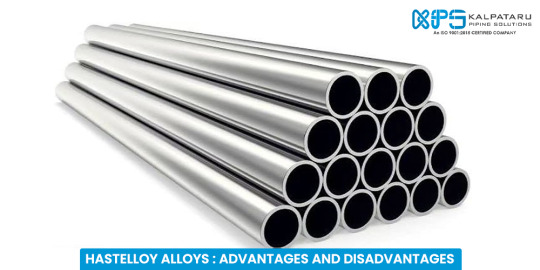
What is Hastelloy Alloys?
Hastelloy alloys, particularly Hastelloy C276, stand at the forefront of the market as some of the most robust and reliable materials available today. However, like any material, they come with their own set of advantages and disadvantages. In this comprehensive analysis, we will delve into the pros and cons of utilizing hastelloy alloys, including Hastelloy C276 and hastelloy c276 sheets, providing a deeper understanding of why they have gained immense popularity in various industries.
Top 5 Advantages of Hastelloy Alloys
1. Exceptional Corrosion Resistance and Durability:
Hastelloy alloys boast outstanding corrosion resistance and unparalleled durability. These two paramount advantages render them an appealing choice across numerous sectors. Additionally, they exhibit resistance to oxidation, making them indispensable in high-temperature environments. Moreover, hastelloy alloys excel in withstanding stress corrosion cracking, chloride pitting, and crevice corrosion. Consequently, these alloys find extensive applications in chemical processing plants, power plants, marine industries, and other industrial settings where corrosion or extreme temperatures pose significant risks. Furthermore, the ease of machining hastelloy alloys into intricate shapes without compromising their strength or integrity is an added advantage.
2. The Nickel-based Marvel:
Hastelloy alloys primarily consist of nickel, along with chromium, molybdenum, iron, and cobalt. This meticulously balanced composition of metals endows Hastelloy with superior strength and enhanced resistance to corrosion compared to other alloys.
3. The Impenetrable Shield against Corrosion:
Of paramount significance, Hastelloy’s resistance to corrosion is one of its most prominent properties. This alloy effectively withstands both acidic and basic solutions, as well as saltwater, making it an ideal choice for diverse environments. Remarkably, Hastelloy remains unscathed even in the presence of chlorine and other halides.
4. Unyielding Strength and Durability:
Another remarkable advantage of Hastelloy is its robustness and durability. Capable of enduring high temperatures without sacrificing its strength or turning brittle, Hastelloy exhibits negligible expansion or contraction when exposed to extreme thermal conditions. This remarkable attribute makes it a favored material for high-pressure applications.
5. Non-magnetic Excellence:
Hastelloy’s non-magnetic nature is particularly valuable in applications that demand materials devoid of magnetic properties. This characteristic further enhances Hastelloy’s resistance to electromagnetic interference.
6. Ease of Workability:
Compared to its counterparts, Hastelloy is relatively straightforward to work with. It can be welded, machined, and formed using conventional methods and equipment. Additionally, Hastelloy can undergo cold work without becoming brittle.
Disadvantages of Hastelloy Alloys:
1. The Cost Factor:
Hastelloy’s remarkable attributes come at a price. The material proves to be relatively expensive, and locating suppliers who stock it can pose a challenge. This cost consideration makes Hastelloy less appealing for certain applications, particularly in cost-sensitive industries like the chemical sector.
2. Difficult Workability:
The hardness and brittleness of Hastelloy can present challenges during cutting and welding processes, making it unsuitable for certain applications where ease of workability is crucial.
3. Susceptibility to Stress Cracking:
Alloy C276 is susceptible to stress cracking, particularly when subjected to high stress levels during welding or machining operations. Adequate control measures are vital to prevent hastelloy components from failing due to stress cracking.
4. Limited Compatibility with Other Materials:
Not all materials are compatible with hastelloy. In particular, it should not come into contact with lead or zinc.
Conclusion
Hastelloy C276, a remarkable variant among hastelloy alloys, adds to the array of benefits that make them an attractive choice for many industries across the globe. These include unparalleled corrosion resistance, exceptional durability even in extreme temperatures, and ease of machining into complex shapes without compromising strength or integrity. However, it is essential to consider potential drawbacks before investing in this material. Challenges like difficulty in welding due to its high nickel content, costliness, and limited applications due to its innate strength should be taken into account. Despite these considerations, if you seek a strong yet versatile material with outstanding corrosion resistance properties, hastelloy alloys, particularly Hastelloy C276, may indeed prove to be the perfect fit for your requirements.
0 notes
Text
Erw vs Spiral Pipe : Difference
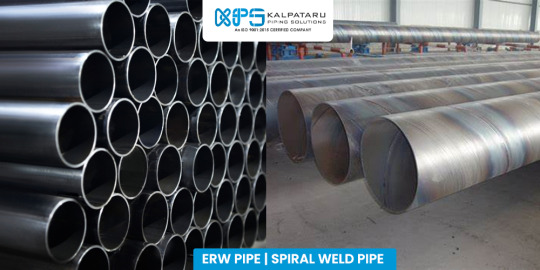
Pipes are a fundamental component in various structures, serving critical roles in plumbing, HVAC systems, and fluid exchange applications. In industries like oil & gas and petrochemicals, pipes play a crucial role in transferring crude oil products. When it comes to pipeline networks and selecting the right pipes for the job, the debate between ERW pipes and spiral pipes emerges due to their unique characteristics, including pressure resistance and performance.
Let’s delve into the essential differences between these two pipe types, from their manufacturing processes to their pressure resistance and overall performance.
Manufacturing Process:
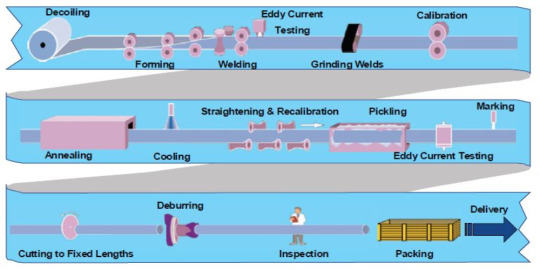
Conversely, spiral pipes begin with an unrolled steel coil unwound using a roller machine. Spiral pipes require a welding wire or filler to fuse the metals together while forming a helix-like structure. The ends of the strips are joined using a submerged arc welding technique, and each welded portion is inspected to ensure there are no defects. Similar to ERW pipes, spiral pipes undergo ultrasonic testing and other non-destructive tests to examine their physical properties, weld quality, and chemical composition.
Pressure Resistance:
During production and end-use, both ERW pipes and spiral pipes experience residual stress, which refers to stress present on the pipes even in the absence of external forces. ERW pipes tend to have lower residual stress due to the longitudinal and straight seam electric welding, as well as the post-processing methods applied. This is critical for storage and use since the single seam does not compromise the pipe’s quality.
In contrast, the spiral rotation in spiral pipes may lead to higher residual stress, potentially pushing the pipe beyond its yield limit. The presence of multiple seams can significantly impact the pipe’s load-bearing capabilities, especially when subjected to tensile, circumferential stresses, and other forces. Additionally, the use of fillers and welding rods in spiral pipes may introduce weld defects and physical deformations.
Performance:
Considering the above factors, ERW pipes tend to outperform spiral pipes in various applications. The single seam in ERW pipes allows for a consistent flow of different fluids, reducing the likelihood of leaks and bursts. In contrast, the multiple seams in spiral pipes can lead to inconsistent pressure changes, affecting specific portions or the entire pipe.
Furthermore, the multiple welded seams in spiral pipes may cause issues with calcium build-ups and chemical deposits, compromising the pipe’s corrosion resistance and longevity. ERW pipes, lacking weld filler raw materials and flux, offer more consistent weld quality, better surface finish, and improved corrosion resistance.
Key Takeaway:
The choice between ERW pipes and spiral pipes comes down to their manufacturing process, pressure resistance, quality, and overall performance. ERW pipes, produced through electric resistance welding from rolled steel coils or strips, offer enhanced performance and consistency compared to spiral pipes with submerged arc welding on multiple weld seams.
Looking for high-quality Spiral pipes, ERW pipes and Seamless Pipe? Kalpataru Piping Solutions selection can meet your industry’s pipeline supply and requirements. Click here to learn more!
0 notes
Text
Sheet Metal Gauge Chart
Discover a comprehensive Sheet Metal Gauge Chart, provides valuable information on gauges, thicknesses, and measurements. Find out the equivalent of 14 & 16 gauge thickness in mm and explore the world of gauge sheet metal.
#Sheet Metal Gauge Chart#Metal Gauge Chart#gauge sheet metal#16 gauge thickness in mm#14 gauge thickness in mm
0 notes
Text
Buy Beryllium Copper Wire | Copper Beryllium Sheet
Looking for high-quality copper products? Look no further! Buy Beryllium Copper Wire and Copper Beryllium Sheet from our reliable supplier. We offer top-grade materials that meet your specific requirements. Enhance conductivity and durability with our premium copper products. Order now!
0 notes
Text
ISMC 200 Weight Per Meter | MS Channel Weight Chart
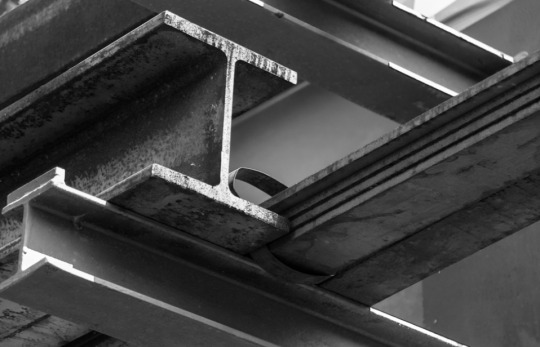
If you're in need of information about the weight of an ISMC 200 channel per meter, you've come to the right place. Kalpataru Piping Solutions provides a comprehensive MS Channel Weight Chart that includes all the necessary details about ISMC 200 channels, such as weight, dimensions, and more.
#Ismc#ismc weight calculator#ismc weight chart#ismc standard sizes#ismc channel weight calculator#ismc 300 weight per meter#ismc channel sizes#ismc 250 weight per meter#ismc 100 weight per meter#ismc standard
0 notes
Text
Beryllium Copper Strip Suppliers | Copper Strip | Copper Beryllium Foil
Looking for reliable Beryllium Copper Strip Suppliers? Look no further! Our website offers a wide range of Copper Strip options, including Copper Beryllium Foil. We provide high-quality products that are durable and efficient for various industrial applications. Explore our website to learn more about our Copper Strip selection and find the perfect fit for your project needs.
#copper strip#beryllium copper strip#beryllium copper strip suppliers#beryllium copper coil#copper beryllium foil#steel strips#copper strip price
0 notes
Text
Beryllium Copper Rod | Beryllium Copper Properties | Copper Rod
Discover the exceptional properties of Beryllium Copper Rod through our comprehensive guide. Learn more about its unique characteristics and advantages for various industrial applications. Our website offers extensive information on Beryllium Copper Properties and its various uses. Browse our Copper Rod selection and find the perfect fit for your project needs.
#beryllium copper#beryllium copper rod suppliers#beryllium copper rod#beryllium copper bar#beryllium copper round bar#beryllium copper alloy
0 notes
Text
Difference Between Socket Weld and Butt Weld
There are different interfacing types for the Pipe Flanges, fittings and valves: Socket weld, butt weld, strung, etc. Two of them to be very well known: Socket welding and butt welding. Be that as it may, you may be befuddled about which one would be best for your development ventures since them two appear to have their very own upsides and downsides.
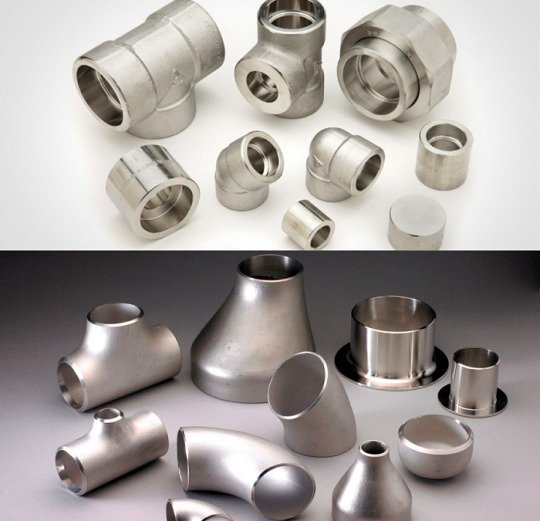
Socket Weld:
Socketweld Fittings are characterized in the ASME B16.11. Likewise, with Socket weld, a pipe is embedded into a recessed region of the fitting. Both the pipe and the fitting are square cut, with no requirement for angled end or planning other than cleaning the outside, which permits simple welding and establishment. A Socket weld fittings include two diverse measured bits of pipe. The little one is inside the bigger pipe. The weld is totally around the outside circuit of the bigger pipe.
Butt Weld:
Buttweld Fittings are characterized in the ASME B16.9. They are welded at their closures to the pipe end, with a similar thickness as channels. The finish of butt weld fittings will be slanted. A butt weld fittings are two bits of materials rammed into one another and welded. A few distinct strategies exist for sloping the two pieces for good weld infiltration. Both level stock and pipe or tubing can be butt welded. For the most part, the weld is ground flush with the material surface.
Features:
Socket weld is anything but difficult to introduce. Be that as it may, it requires approx. 1/16″ of a hole at the base of the pipe into Socket, to permit warm development. This hole can prompt overpressure issue that splits the filet weld of the fitting. Socket weld is inconvenient in destructive liquid administration because of hole consumption. Also, it is anything but difficult to consume because of the irregularity of the smooth pipe internals.
Buttweld is the “best” as far as quality, weariness, and erosion obstruction, and temperatures consistence. Be that as it may, it is progressively hard to fit-up and weld appropriately, requiring gifted welder and much time.
Applications:
Socket weld opposes around 1/2 the quality of butt welding. So it is fundamentally utilized for a little pipeline with measurements NPS 2 or littler.
Buttweld keeps better quality, useful for high weight or high-temperature pipelines. So it is utilized when a welded joint with quality not lower than that of the base metal itself is required.
Diameters & Ends:
Socket welding can be utilized for channels with little distances across, and it is commonly connected to funnels or pipe fittings whose widths are under DN50.
Butt welding is broadly utilized for channels with of all shapes and sizes distances across, and strung welding or Socket welding is utilized for funnels with little breadths.
As a rule, there ought to be an inclined end from 30 to 37.5° for butt welding so as to fill the welding dot. Obviously, there will be a compound inclined end for very thick dividers.
Socket welding doesn’t require an incline, and it can legitimately weld the part.
Pricing:
Typically, the cost of Socket weld fittings is higher than Butt weld fittings in comparative size. Be that as it may, the additional expense of butt weld is higher for the establishment, considering work cost and gifted welder.
0 notes
Text
How To Control Beryllium Copper Heating Time ?
The beryllium copper heating time encompasses both the heating and heat preservation (soaking) times. Short heating times, high heating rates, and uniform heating are needed to minimise ingot oxidation and energy consumption. It is essential to add up and take into account the heating temperature, the type of alloy, and the ingot’s dimensions in order to calculate the beryllium copper heating time.
The beryllium copper should be heated quickly and for the proper amount of time. Heat conduction is quick, the furnace temperature is high, and the temperature increases quickly. High-temperature heating has many advantages, especially for metals and alloys with excellent thermal conductivity. For some metals, however, the ingot will merely result in the overburn of coarse grains. The primary purpose of the soaking procedure is to prevent an excessive temperature difference between the ingot’s various components. Generally speaking, the temperature differential cannot be greater than 15-20 degrees Celsius; consequently, the better the ingot’s temperature uniformity, the better. Uneven heating will result in issues like cracks, waves, sickle curves, uneven thickness, and challenging biting when hot rolling. When the ingot size is big, the beryllium copper heating time should be appropriately prolonged, or the heating furnace temperature should be appropriately raised.
The beryllium copper heating components are more intricate. Therefore, during the actual production process, we must always remember the beryllium copper heating principle, accurately and flexibly apply the beryllium copper heating techniques, and constantly enhance the beryllium copper processing quality and power.
On the ageing characteristic curve, the relative maximum strength value will be visible when ageing at a temperature greater than 340 degrees Celsius. If the quantity of cold working remains constant, the strength corresponding to this maximum strength will diminish as the ageing temperature rises. If the ageing temperature is set and the rate of cold deformation is increased, the relative maximum strength value will slightly increase and the time of presentation will also be shortened. This results in a shorter ageing time to achieve the corresponding strength value. The ageing hardening of beryllium bronze only creates a meta-stable sedimentary phase below 330 degrees Celsius; above 330 degrees Celsius, it can create an equilibrium sedimentary phase or a meta-stable phase, with the latter being centred on the grain boundaries.
To prevent under and over-ageing, the temperature of beryllium copper during the ageing process needs to be carefully regulated. Under-ageing can also be made up for by ageing to achieve the necessary mechanical function, but once over-ageing begins, it is difficult to reverse without repeated solution heat treatment. Of course, the necessary functions can also be achieved by maximising the interaction between cold work, underaging, and averaging. For instance, when the strength is less than the maximum value asked, cold work and under- or over-ageing (lowering temperature, extending the time, or increasing temperature, shortening the time) are used to achieve the mechanical function of beryllium bronze that is desired.
Read More :
The Casting Shortening Rate Of Beryllium Copper Rod Is Small: Beryllium copper rods are used in the atmosphere, in seawater, in freshwater, and in steam for steam boilers and maritime ship components. Copper beryllium which contains phosphorus has mechanical properties and can be used in high-precision machine tools as polishing and elastic components.
C17200 Can Be Used As High Air Tightness Casting: It has been used for approximately 6,000 years. C17200 has excellent mechanical and technological properties, and it can be welded and brazed without sparks during impact.
0 notes
Link
0 notes
Link
0 notes